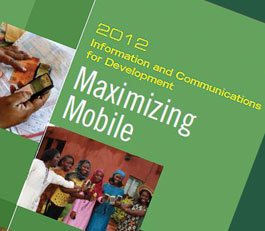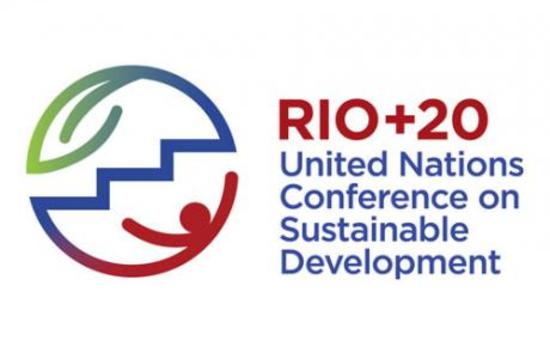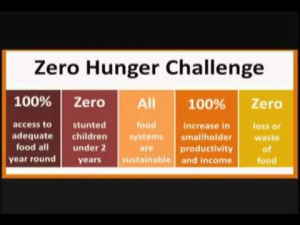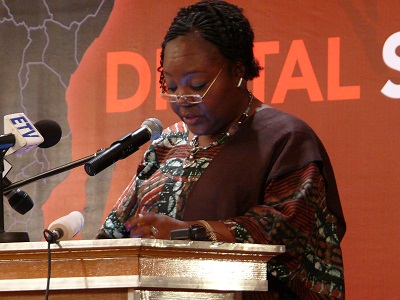There is no doubt that the current surge in mobile innovations for agricultural development is defying the normal progressive growth of agricultural technologies over the past decades. For centuries, innovations in agricultural technologies have been progressively slow. The emergent of information and communication technologies (ICTs) and their innovative use to support agricultural extension and advisory services has, however, changed the history forever. According to the World Bank report Information and Communications for Development 2012: Maximizing Mobile, close to 6 billion mobile phones are in use today, a jump from less than 1 billion subscriptions in 2003. About 77% of the 6 billion subscriptions is located in the developing nations in which 70% of the world’s poor whose main source of income and employment comes from the agricultural sector.
Agricultural Technologies and the Future In her 1991 paper “Beyond Tractors: The History of Technology in American Agriculture,” Deborah Fitzgerald, Professor of the History of Technology in the Program in Science, Technology, and Society (STS) at MIT, argued that the history of agricultural technology is in a very nascent stage of development, and it is difficult to predict the outlines of a more orderly, systematic future. Barely 20 years after her observation, the developments in mobile technology for agriculture have confirmed her argument. Little is known about any prediction of the current growth of mobile technologies, especially in the world’s poorest regions. It is also becoming more difficult to predict what the market will look like in the next decade given the fast pace at which the technology is growing.
So Why This Sudden Spurt? The 2nd chapter of the World Bank report referenced above titled “Mobilizing the Agricultural Value Chain” has identified a number of factors that are driving the increased adoption of mobile phones for agriculture in the developing nations:
- Improved accessibility and affordability through expansion of mobile networks.
- Increased capacity or bandwidth availability on mobile networks as the technology evolves.
- Increasing data-enabled mobile devices with increasing affordability.
- Innovative development of remote wireless sensors and identification technologies.
- Increasing availability of specialized mobile services targeted to specific agricultural functions.
These and other factors, such as wide ownership of mobile phones, instant and convenient service delivery, increasing functions, and falling prices of mobile handsets, will continue to drive its adoption.
Looking into the Future of Mobile Innovations for Agriculture
According to USAID, innovations must lead to substantial (not incremental) improvements in addressing development challenges. But this does not seem to be the case in the mobile agricultural sector. The role of mobile agricultural projects in addressing development challenges in the developing nations is yet to be empirically tested in most countries. Anecdotal results have been reported here and there, but there is little to cite about any substantial impact on agriculture and rural development. An interesting trend with the mobile innovations for agriculture pointed out by the report is that, the applications are usually designed locally and for specific target markets, with localized content specific to the languages, crop types, and farming methods. It continues that while these local designs may offer exciting opportunities for local content and applications development, they may also limit the economies of scale realizable from expanding from pilot programs into mass markets, potentially hindering the spread of new and promising applications and services. So while development practitioners are careful not to repeat the traditional “technology transfer” approach in the ICTs for development sector, they are also faced with the limitations of scalability of the locally developed mobile applications for agriculture.
Is Reverse Innovation a Possible Solution to Limited Scaling of Locally Developed Mobile Apps? The local app development market in the emerging economies is being boosted by the proliferation of Technology Hubs & Parks in these countries. But what are the approaches to development of applications within these hubs? How can we learn from the past challenges with technology transfer and the current scaling limitations of locally developed apps for agriculture? The concept of reverse innovation developed by Vijay Govindarajan, and Chris Trimble and explained in details with practical applications in their book, “Reverse Innovation: Create Far From Home, Win Everywhere”, could bring these two challenges together. A key component of the concept is about building Local Growth Teams (LGTs). Within the mobile agricultural sector, LGTs comprising of ICT developers, marketing specialists, and content developers in the emerging economies with strong link with global market could be developed. This will ensure that locally developed ICTs apps with inexpensive models and limited infrastructure to meet the needs of developing nations, can be easily repackaged as low-cost innovative goods for Western buyers. This could address the scaling challenge brought up by the report and at the same time limit the traditional diffusion of technologies from the developed to developing nations.
Oversights: Mobile Solutions for R&D and Data Collection? I would like to recap my recent work on “Mapping ICTs Along the Agricultural Value Chain” for USAID’s Global Broadband and Innovations (GBI) program. Two key components of the value chain, which seem to be overlooked, are ICTs for agricultural research and development (R&D), and ICTs for data collection to inform monitoring and evaluation (M&E). Firstly, mobile technologies for agricultural R&D are emerging, but due to the traditional under-estimation and under-investment in agricultural R&D in developing countries, little attention is being paid to its potential. There is huge potential in the use of mobile technologies to support the work of agricultural researchers, agricultural science students, extension staffs, and farmers to facilitate access to scientific knowledge and exchange of information between and among these actors. Unfortunately, this has been overlooked by this important report. Secondly, mobile technologies are being used along the agricultural value chain for data collection in order to inform policy and decision-making. The report did mention briefly the importance of mobile in agricultural data collection, for example the work of Grameen Foundations Community Knowledge Worker (CKW) program in Uganda and the Reuters Market Light (RML) in India. But in addition to these programs, there are host of new mobile applications that are being used in this area that need to be acknowledged. Examples include iFormBuilder, EpiSurveyor, Open data Kit, among others. These new mobile applications are essential for the work of extension staff – both public and private to facilitate their work. Most importantly, timely and accurate data through these applications will lead to actions that will benefit the smallholder farmer in a number of ways, thereby increasing their productivity.
Conclusion The growth of mobile technologies for agriculture has outpaced the speed of past technological developments within the sector. While the invention of tractors in the 1800’s was acclaimed a significant breakthrough for agriculture, not even the green revolution in the 1900’s can be compared to the extensiveness and intensiveness of mobile technologies for agriculture. The World Bank report reference in this post has done excellent job by carefully selecting experts in the field of ICTs for development to delve into a number of cases worth following. Specifically on the second chapter that deals with mobile technologies and agriculture, I believe practitioners, researchers, technology developers, policy makers, and users of agriculture and mobile technologies should look critically into the recommendations given at the end – business models, ICT skills and the supporting infrastructure to insure the growth and sustenance of the revolution.























































